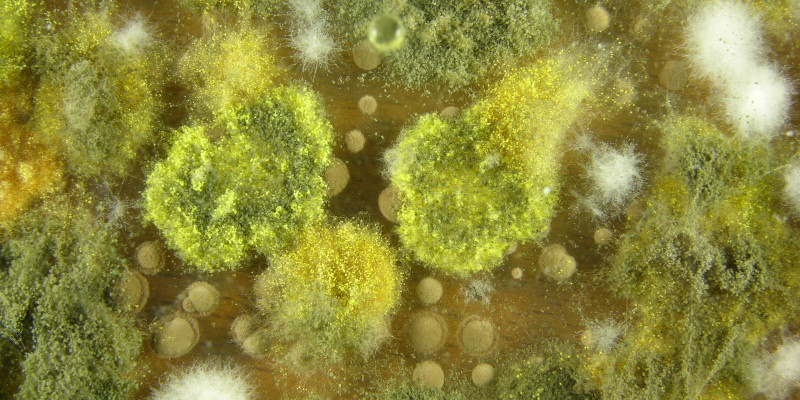Mould
 Click to enlarge
Click to enlargeSource: Regine Szewzyk / Umweltbundesamt
Mould is a fungus which develops typical mushroom threads and spores. Mould needs lots of moisture to grow.
 Umweltbundesamt
Umweltbundesamt
 Click to enlarge
Click to enlargeMould is a fungus which develops typical mushroom threads and spores. Mould needs lots of moisture to grow.
The causes of higher dampness inside buildings might include: direct inflow of wetness from leaky roofs, cracks in walls, incomplete drying after construction measures, or flooding as a result of burst pipes, etc. An additional cause may be insufficient discharge of increased indoor air humidity, improper heating and airing, condensation of humidity near “cold“ walls, formed in places where circulation of indoor air is poor.
Mould often lurks unnoticed, and its first outward signs are a dank smell or dark patches forming on walls, ceilings, or furniture. Urgent action is needed if mould is easily seen by eyes. Before taking measures to clean up mould infestation, its causes - especially if due to increased dampness - must be identified and stopped.
Mould can pose a risk to health, especially if large amounts of the spores are inhaled. Moulds principally have the potential to trigger allergic reactions such as inflammation of the mucous membranes, coughing, headache, or fatigue. Asthma attacks may also occur in people who are sensitized for the illness or in highly sensitised individuals.
An effective precautionary measure to prevent mould growth is proper ventilation and heating that regularly transports dampness outdoors, in buildings which must be structurally sound per se and not allow any direct means for wetness to enter. A change in ventilation methods may be required in modern, airtight buildings in order to reduce the danger of mould infestation. As a rule: cold air transported inside by ventilation can remove more humidity from a room in the winter than in the summer.
The German Federal Environment Agency (Umweltbundesamt) has published both, a brochure in German and detailed guide with information about the causes, assessment, and action to be taken against mould infestation, which is free of charge to the interested public.